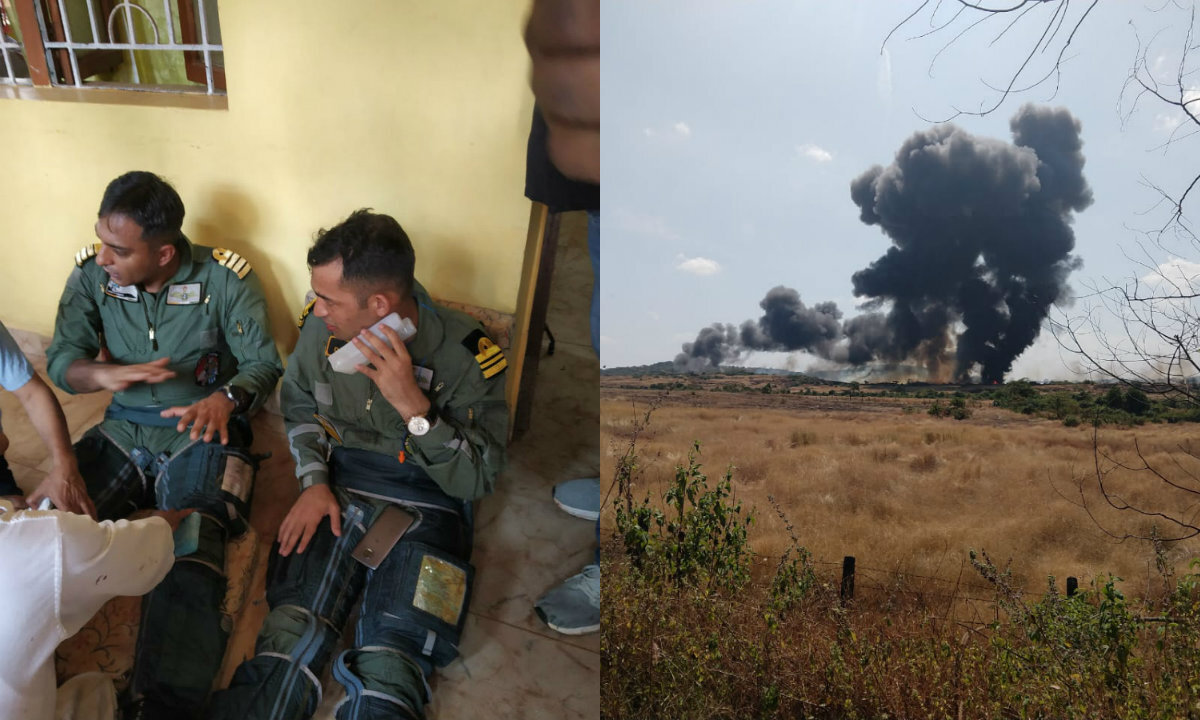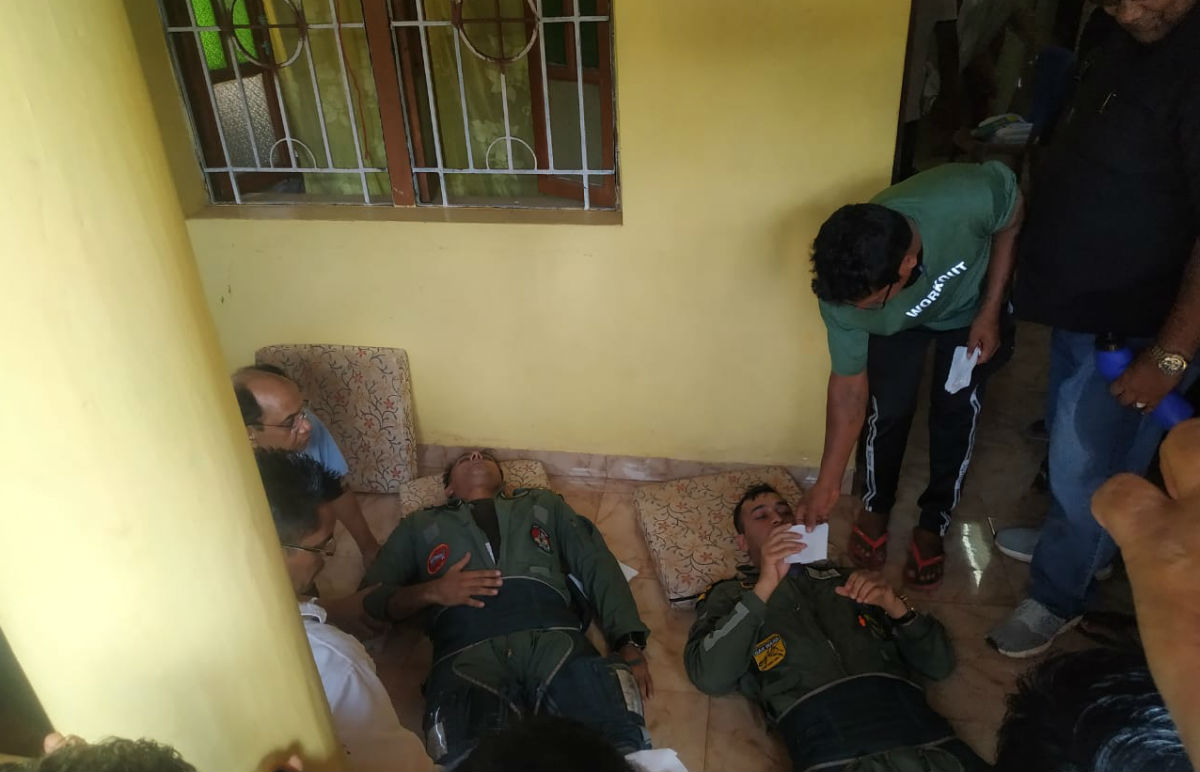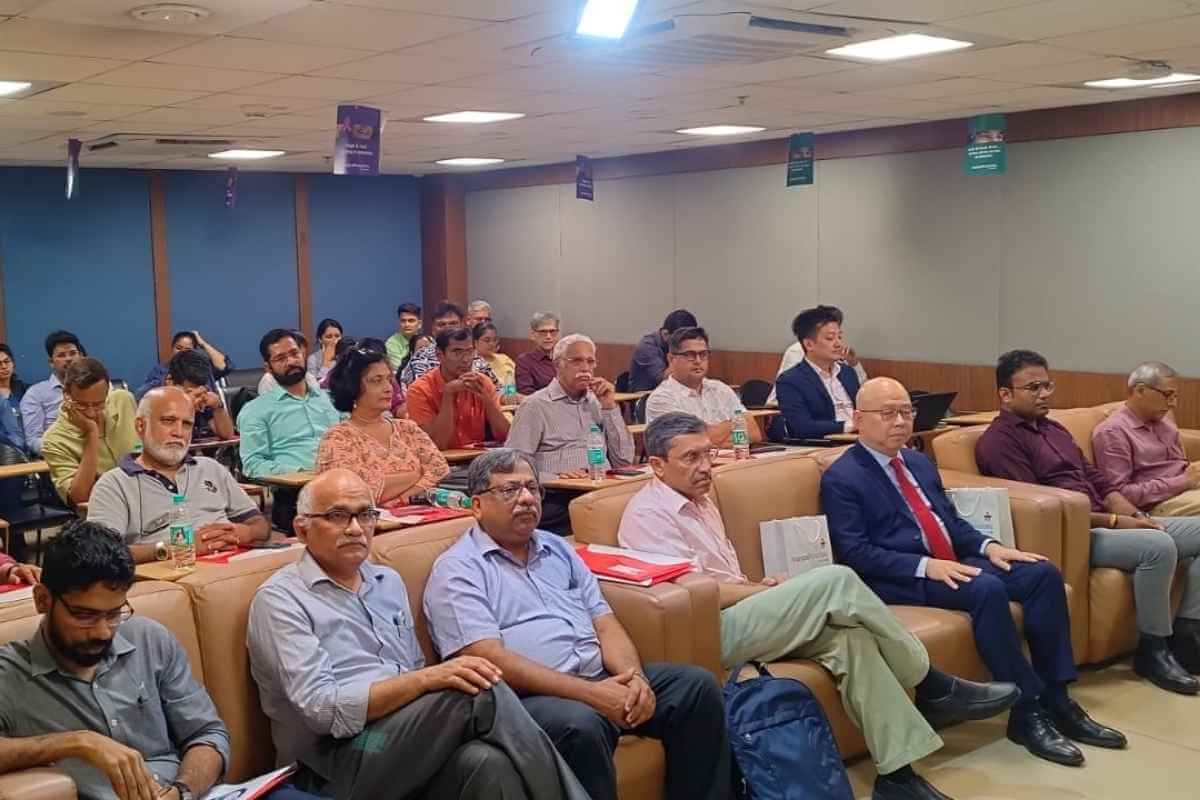Crashing of fighter planes has become a regular affair in our country with billions of dollars smoldered and turned into the ashes and many valuable lives lost. There are reports that make it clear that these crashes are taken place due to human errors or fault in technology. Although this crash particular crash in Goa happened due to the bird hit as mentioned in the report and another major reason is the absence of Avian Radar at Goa Airbase.
According to a report published in Times of India, In yet another crash in the armed forces, a naval MiG-29K fighter went down after a bird-hit at Goa on Saturday. The two pilots, fortunately, managed to eject safely, but the accident once again brought to the fore the continuing absence of bird-detection or avian radars at airbases around the country.
The Navy said the supersonic MiG-29K twin-seat fighter, with Captain Mrigank Sheokhand (commanding officer of the “White Tigers” squadron) and Lt-Commander Deepak Yadav, encountered a flock of birds soon after take-off from the naval air base INS Hansa at Dabolim in Goa just before noon.

“The pilot (Capt Sheokhand) observed the left engine had flamed out and the right engine was on fire as well. Attempts to recover the aircraft were unsuccessful. Showing the great presence of mind, the pilot pointed the aircraft away from populated areas. Both he and the co-pilot then ejected safely. An inquiry has been instituted into the accident after the flight data recorder was recovered, though prima facie it was a bird-hit,” said an officer.
The reports said that this MIG-29K is one of the 45 MIGs procured by India recently from Russia with the cost of 2 Billion US Dollars to operate from India’s biggest Aircraft Carrier INS Vikramaditya and it was included by NAVY in the year 2013 under a separate deal of 2.23 billion Dollars.
Shockingly during the two years period 2015-16 Indian Air Force, Army and Navy have consolidated losses of around 50 aircraft and Helicopters in various crashes and the same has claimed more than 70 lives. This makes India one of the highest in Military Crash Rates in the world.

According to the reports, The IAF alone this year has lost eight fighters (three MiG-21s, two MiG-27s and a Jaguar, Sukhoi-30MKI and Mirage-2000 each), an AN-32 transport aircraft, two Hawk advanced jet trainers and a Mi-17 V5 helicopter till now, in which over 20 personnel have been killed and shockingly around 90% of the crashes were due to the Technical Defects or human errors which arise due to aging aircraft, shoddy maintenance and inadequate pilot training. But bird hits, responsible for the rest of the crashes, also represent a crucial flight safety concern.
The absence of Avian Radar is also highly responsible for the crash which destroyed the multi-million dollars aircraft that was procured with the taxpayers money and now post-accident the IAF (Indian Air Force) has began the hunt for the procurement of the same. The Avian Radar with the three-dimensional cover which will ensure data on birds like height, number, collision course and the like are fed to aircraft in real-time for taking necessary evasive action.
“The procurement process has been scrapped three to four times since 2009-2010 due to various reasons. The fresh tender or RFP (request for proposal) for around 50 avian radars will include the requirements of both IAF and Navy,” said an officer.
Goa is not the only place that has a bird hazard that causes frequent accidents and breaks in flights there are cities like Agra, Ambala, Bareilly, Gwalior, Srinagar and Tezpur, among others, IAF undertakes several bird hazard control measures. These range from use of “zone guns” and firecrackers, automated scarecrows and special frequency transmitters to proper garbage disposal, solid waste management and “risk awareness campaigns” among the citizenry. The avian radars, if and when inducted, will contribute to this “bird strike mitigation” in a major way.
If the Avian Radar can help to eradicate the Bird Hazard that costs hundreds of million dollars and human life loss then it may be worth installing the same on the bird prone zones. Why Government does not take this seriously? Who is answerable to the loss of aircraft that’s costs in billions and invaluable human lives!!
SOURCE: TOI
IMAGES: MEDIAFIRE


























